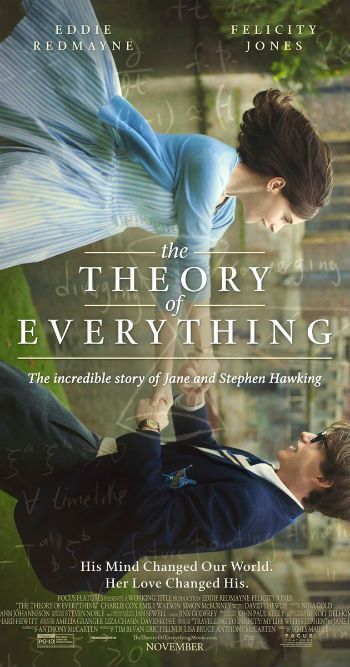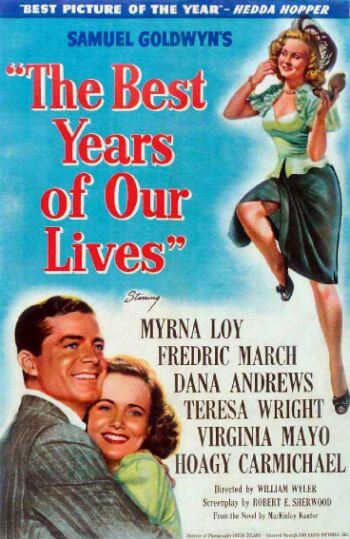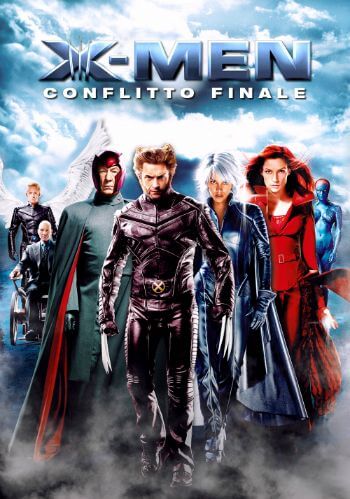Share:
Take it offline!
This Education in Motion resource is also available as a printable PDF.
Download PDF
Representation matters and it is great seeing disability in film. From biopics to animation, disabilities are there on the silver screen. Here is a pick of five disability positive films you might not have considered.
The Biopic
The Theory of Everything (2014), starring Eddie Redmayne as Stephen Hawking, is a biopic of Hawking’s early career based on the memoirs of his ex wife Jane Hawking. While some films may have focused on the brain of a genius and the excitement of scientific discovery,and other directors may have been tempted to focus on an “inspirational” story of survival against the odds, The Theory of Everything instead, considers the life and people around Hawking. Inevitably, Hawking’s Motor Neuron Disease plays a massive role in this, but the film takes a sensitive approach, considering how the physical degradation impacted his personal life and was embraced by Hawking as his passion in his search for “The Theory of Everything” grew. This film isn’t just for the science geeks, it’s a film for anybody who is interested in how challenges shape our lives.

The Coming of Age
Garden State (2004) at first glance looks like a typical American coming of age story: young adult returns to their small home town, meets somebody special and learns something about themselves. In fact, Garden State is just a bit more. Andrew (Zach Braff) returns home from LA following the death of his mother. While home he meets old friends, Dave and Mark, and makes a new friend in Sam. Together they go on small town adventures, party, and deal with death and growth. However, underpinning many of their experiences are the character’s reactions to disability, health and mortality. Andrew’s own mental health is explored in conjunction with his father’s grief and Andrew’s role in his mother’s paraplegia. Additionally, Sam (Natalie Portman) struggles with people’s perception of her epilepsy and mental health issues and works hard to prove that she is more than a diagnosis.
A small town, coming of age film that depicts a number of disabilities and chronic health issues and acknowledges that they can impact our lives in a myriad of ways is virtually unique. It’s this nuanced and realistic portrayal of disability that makes Garden State greater than the sum of its parts.

The War Story
The Best Years of Our Lives (1946) was filmed in the tumultuous war years of the US, as an entire generation came to understand the very personal impact of war. One such impact was of course, the number of personnel who returned from overseas with disabilities, injuries and PTSD (Post Traumatic Stress Disorder). The Best Years of Our Lives introduces us to Able Seaman, Homer Parish (Harold Russell) a double amputee who has been rehabilitated to function well with his new prosthetic hooks in place of his hands. Though proud and comfortable with how well he has adapted to using his prosthesis, he still has anxiety about how he will fit in as a civilian and has to come to terms with not just how he sees himself but other’s reactions to him.
With the help of the buddies he made on the journey home, who also have their own difficulties returning to civilian life, Homer is able to come to terms with accepting help. More than that, the people around him come to terms with seeing past the disability and treating Homer with dignity and respect, valuing him for what he can do and not focussing on his limits. This may have been made in 1946 and couched in vintage charm but it still holds relevance today.

The Analogy
This is not a film that usually appears as a film about disability but it has a place: X-Men: The Last Stand (2006). The third film in the X-Men film franchise sees controversy in the mutant community after Worthington Labs develops a “cure” for the mutant gene. Factions form, those who believe it could be a good thing and could help those struggling with their mutation: this includes Rogue (Anna Paquin) who wants a solution to her lethal touch. Others are angry fearing that the cure could be used to wipe out mutant kind. In true X-men style, this debate takes place over numerous fantastical battles, daring escapes and brutal challenges putting their mutant skills and morals to the test. But what does this have to do with disability?
Numerous individuals and activists groups see in X-Men: The Last Stand an analogy for the issues faced by people with disabilities and chronic illness. There are those for whom acceptance and pride in their disability is vital and something that should be strived for and campaigned for in our society. Equally, there are those who would like a cure for their illnesses and disabilities, especially if it could take away those symptoms that are more difficult to live with, like chronic pain or incontinence. Of course, there are many people who embrace both sides of the debate: determined to be accepted in society, but who wish to be free of certain aspects of their condition. Additionally, there are the various difficulties faced by certain groups, for example those on the Autistic Spectrum, who must contend with there being significant pressure to “cure” them. The resolution of the film isn’t clear in terms of disability politics, but the possibilities for discussion that it raises and the framing of the arguments for non disabled people are valuable.

The Kids Film
Inside Out (2015) is the acclaimed animation that takes place, for the most part, inside a teen’s brain. The film brings to life various emotions and we follow these colour coded characters as the teen struggles with teenage depression and stress. Sadness and Joy (voiced by Phyllis Smith and Amy Poehler) must go on an expedition through the memories, interests and thoughts of their young host, in order to restore equilibrium and well being. It is an absolutely touching story that connects with the experiences of many people with long term mental health problems, as well as recognising and supporting younger viewers.

The inclusion of wheelchair users in film is certainly encouraging. There are a number of wheelchair users throughout the world of film, TV and science. Take a look at some of the big players in our blog post about famous people with disabilities.
A number of Sunrise Medical's powered wheelchairs give you the possibility to control your TV and entertainment system through our powerchair, take a look at the range.